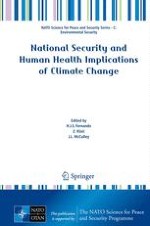2012 | OriginalPaper | Buchkapitel
13. The Height of the Atmospheric Planetary Boundary layer: State of the Art and New Development
verfasst von : Sergej S. Zilitinkevich
Erschienen in: National Security and Human Health Implications of Climate Change
Verlag: Springer Netherlands
Aktivieren Sie unsere intelligente Suche, um passende Fachinhalte oder Patente zu finden.
Wählen Sie Textabschnitte aus um mit Künstlicher Intelligenz passenden Patente zu finden. powered by
Markieren Sie Textabschnitte, um KI-gestützt weitere passende Inhalte zu finden. powered by
